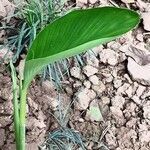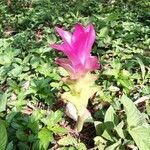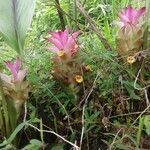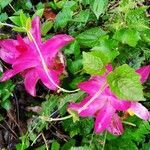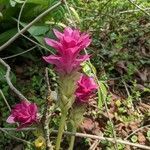| Therapeutic use
|
Asthma (leaf), Gastrointestinal diseases (leaf), Tuberculosis (leaf), Acne vulgaris (rhizome), Anthelmintics (rhizome), Anti-bacterial agents (rhizome), Antifungal agents (rhizome), Antinematodal agents (rhizome), Antineoplastic agents (rhizome), Antirheumatic agents (rhizome), Appetite stimulants (rhizome), Central nervous system diseases (rhizome), Contusions (rhizome), Dysentery (rhizome), Dyspepsia (rhizome), Edema (rhizome), Exanthema (rhizome), Fever (rhizome), Flatulence (rhizome), Hypersensitivity (rhizome), Infection (rhizome), Inflammation (rhizome), Intestinal diseases, parasitic (rhizome), Jaundice (rhizome), Pain (rhizome), Parasympatholytics (rhizome), Pregnancy complications (rhizome), General tonic for rejuvenation (rhizome), Sexually transmitted diseases (rhizome), Skin diseases (rhizome), Snake bites (rhizome), Sprains and strains (rhizome), Wounds and injuries (rhizome), Abdominal pain (root), Fever (root), Wounds and injuries (root), Asthma (stem), Tuberculosis (stem), Anti-bacterial agents (tuber), Asthma (tuber), Astringents (tuber), Contraceptive agents (tuber), Contusions (tuber), Exanthema (tuber), Infection (tuber), Skin diseases, infectious (tuber), Sprains and strains (tuber), Tuberculosis (tuber), Bactericide (unspecified), Balsamic (unspecified), Cancer (unspecified), Candida (unspecified), Carminative (unspecified), Cholagogue (unspecified), Fungicide (unspecified), Sprain (unspecified), Stomachic (unspecified), Tonic (unspecified), Bruise (unspecified), Stimulant (unspecified), Appetite stimulants (unspecified), Bronchitis (unspecified), Contusions (unspecified), Cough (unspecified), Exanthema (unspecified), Flatulence (unspecified), Gastritis (unspecified), Hematologic diseases (unspecified), Hiccup (unspecified), Sprains and strains (unspecified), Vitiligo (unspecified), Anthelmintics (whole plant), Antifungal agents (whole plant), Anti-infective agents (whole plant), Gastritis (whole plant), Uterine cervical neoplasms (whole plant)
|
